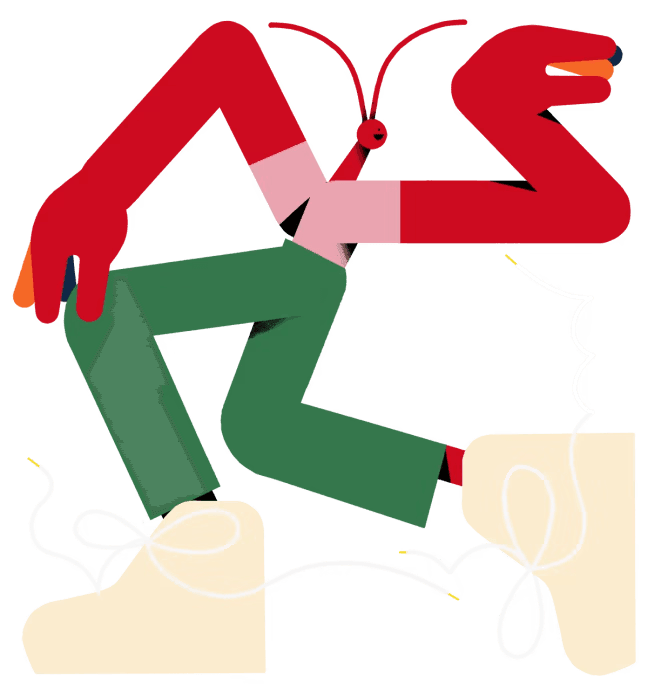IN ADDITION TO BEING HIGHLY NUTRITIOUS, INSECTS HAVE AN EXTREMELY LOW ENVIRONMENTAL FOOTPRINT
SUSTAINABILITY SUPERSTAR
Crickets are rich in nutrients, complete proteins, minerals, vitamins, essential fatty acids, and natural antioxidants.
In fact, gram for gram, crickets contain more protein than beef, more calcium than milk, more vitamin B12 than red meat, more iron than spinach, more omega-3 than salmon, more fiber than brown rice, and more potassium than bananas! They are a sustainable superfood!
Chart source: USDA – U.S. Department of Agriculture – Agricultural Research Service
PROTEINS PER 40G
RICH IN VITAMIN B12
Vitamin B12 is a true energy booster and is essential for the health of both the body and the brain.
Here are some amazing things B12 does for us: it helps form red blood cells and create and regulate DNA, strengthens the immune system, and can even improve our mood!
Getting enough B12 in your diet is crucial, especially if you cut back on meat, since it’s not found in plant-based foods (unless artificially added).
Chart source: USDA – U.S. Department of Agriculture – Agricultural Research Service
VITAMIN B12 PER 100G
LOWER GREENHOUSE GAS EMISSIONS
If livestock were a country, it would rank third in greenhouse gas emissions, in a close race with the United States for second place.¹
Crazy, right? One third of the planet's arable land² is used for growing feed and grazing livestock. Global animal production requires about 2422 Gm3 (one gigameter equals one billion meters) of water per year, with one third of this volume allocated to the beef cattle sector.³
The good news? Crickets produce less than 0.1% of the greenhouse gases emitted by cows, and the reduction is just as drastic when it comes to resources, energy, and feed. Go insects!
*In the chart: Greenhouse gases released per kg of live weight
Chart source: Food and Agriculture Organization of the United Nations; Oonincx et al., 2010
GREENHOUSE GAS EMISSIONS
LOW WATER CONSUMPTION
Compared to cattle, crickets require only 20% of the water needed to produce the same amount of protein.
Considering the huge amount of water needed for feed, cattle farming demands an impressive amount of water.
Insects, on the other hand, hydrate directly from their food and consume much less water than vertebrate animals! Additionally, compared to plants, they are much more efficient thanks to their incredible protein content.
Let's shout it out: crickets are a sustainable food!
Graphic source: Food and Agriculture Organization of the United Nations; Miglietta et al., 2015
WATER CONSUMPTION PER GRAM OF PROTEIN
SMART SOIL USE
One third of the planet's arable land is already used for growing crops to feed livestock.
According to the FAO report, 13 billion hectares of forests are lost each year due to land being converted for agricultural uses such as pastures or crops, both for food production and livestock feed. Traditional livestock farming is one of the main threats to biodiversity and requires vast areas of land, often obtained by deforesting forests.
Insect farming is a far more efficient alternative, as insects can be raised vertically and almost anywhere: they can even be farmed in the kitchen, using food waste like fruit and vegetable scraps.
Chart source: Food and Agriculture Organization of the United Nations; Oonincx and de Boer, 2012



